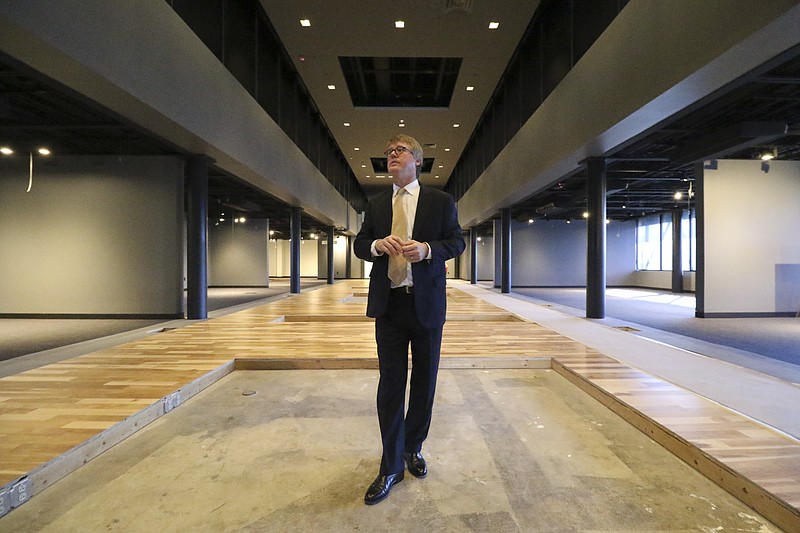The opening of the Chattanooga History Center in sleekly designed space in a Tennessee Aquarium Plaza building for the last five years was always right around the corner. Now it appears after some $10 million was raised and most of it spent, that corner may never be rounded.
Today, that prime space is being marketed for sale by River City Co., which holds the mortgage.
The museum, according to board President Jo Coke, couldn't pay the mortgage it owed on the building in December or on a loan it had from a foundation.
"That cratered us," she said.
Along the way, according to Times Free Press archives, the city contributed more than $578,000 to the project, the Benwood Foundation $450,000, the National Endowment for the Humanities $400,000, Unum Group $350,000, First Tennessee $50,000, and the Lyndhurst Foundation said it would match up to $250,000. And those are just a few of the groups that are unlikely to see any return on their investments.
Nevertheless, Coke says there's still time for a "white knight" to sweep in, give the museum $5 million (and receive naming rights) and allow the center to complete the details necessary for it to open. Or, she said, such a donor could buy the building and lease it back to the museum.
White knights are hard to come by, though. Especially when an education initiative like Chattanooga 2.0 and a new children's hospital are making pitches for assistance at the same time.
Local contributors would be rightly gun-shy because of the History's Center's track record. The two-story, 11,000-square-foot complex, after all, was scheduled to open in 2012, then 2013, then 2014.
The museum spent about $4 million on construction and was to have spent about $4.5 million on contracts with pricey museum designer Ralph Appelbaum Associates, which also designed the United States Holocaust Memorial Museum. It needs about $2.3 million to finish the designs, Coke said.
It also spent its interactive budget on videos for the space, the introductory one of which featured the voice of actor and Chattanooga native Samuel L. Jackson.
Understandably, any potential white knight would demand an accounting of exactly what has been spent and where.
In the meantime, River City President Kim White, who had allowed the organization to go two years without making a mortgage payment, is still shopping the building.
"We have the honor of telling the Chattanooga story," she said, "so we know how important a place" to house that history is.
Most of the museum's contents are still in the Aquarium Plaza building, and a half-time curator continues to work out of the space.
The History Center bought the building in the last decade for $2.3 million, and Coke said it has been appraised for $6.2 million, though she's dubious about the amount. Should it sell, she said, the museum would not pursue a smaller, more manageable building.
Instead, as has been reported, it's negotiating with the Chattanooga Public Library for use of 9,000 square feet of 14,000 square feet of exhibit space available on its third floor.
Whatever is not exhibited, Coke said, could be stored in a lower library level, where she said technology allows for compact storage.
Currently, what is not stored in climate-controlled, bug-free space in the Aquarium Plaza building is in 13 containers at a warehouse in Ooltewah. The museum is in talks with the city about moving those items temporarily to unoccupied space the city owns. That move would require signoff by the City Council and the Chattanooga-Hamilton County Regional Planning Commission.
"I just can't conceive of this ever happening," Coke said of the History Center's plight.
For those who remember the museum's humble beginnings in the former Missionary Ridge Elementary School, for those who leafed through its myriad collections in its former home in a now-razed building on Chestnut Street, for those who saw artist renderings and dreamed of the new space when they made their donations, it is hard to comprehend.
How could the storied history of a city, a collection of 30,000 items, the plans for exhibits on the Trail of Tears, the Civil War, Coca-Cola bottling and the Tennessee Valley Authority, sections on the city's black community and on how its leaders shaped the city, on efforts to clean the air and water after Chattanooga became America's dirtiest city, and on the railroad's role in industry - how could they all be reduced to an exhibit, no matter how nice, in the library?
It's a shame so much history - without Coke's hoped-for white knight - may have to be hidden under a bushel.
